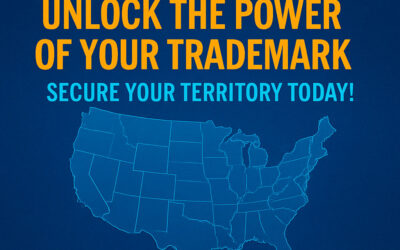You know branding is everywhere. You see it every day on billboards, benches, brochures, and buses. You know branding is logos, corporate names, and signature designs. Branding is sports. It’s teams, it’s athletes, it’s gyms, it’s nutritional supplements. Yet despite knowing what branding is, few outside of the field of intellectual property are accustomed to critiquing a brand.
Unfortunately for business owners, if you don’t know what makes a brand strong, you will have a harder time building your brand. To borrow from the world of sports, gymnasts don’t compete without learning the rules of their sport: nor do figure skaters, divers, or competitors in any subjective competition. Your business is competing with other brands for the loyalty of customers in the marketplace. Why wouldn’t you want to learn the rules?
Like the great coaches of yesteryear, we’ve analyzed some common brands in sports nutrition and wellness to help you do just that. We’ll use these examples to explain what elements should or should not have been included to maximize brand strength, and enable you to make the right decisions regarding your own brand.
You know branding is everywhere. You see it every day on billboards, benches, brochures, and buses. You know branding is logos, corporate names, and signature designs. Branding is sports. It’s teams, it’s athletes, it’s gyms, it’s nutritional supplements. Yet despite knowing what branding is, few outside of the field of intellectual property are accustomed to critiquing a brand.
Unfortunately for business owners, if you don’t know what makes a brand strong, you will have a harder time building your brand. To borrow from the world of sports, gymnasts don’t compete without learning the rules of their sport: nor do figure skaters, divers, or competitors in any subjective competition. Your business is competing with other brands for the loyalty of customers in the marketplace. Why wouldn’t you want to learn the rules?
Like the great coaches of yesteryear, we’ve analyzed some common brands in sports nutrition and wellness to help you do just that. We’ll use these examples to explain what elements should or should not have been included to maximize brand strength, and enable you to make the right decisions regarding your own brand.
AVOID SURNAMES OR GEOGRAPHICAL NAMES

Section 2 of the Lanham Act, the defining law regarding trademarks in the United States, spells out which categories of marks cannot be registered. These are the categories that should be avoided at all costs. If trademark law were the rules of soccer, this section would say “don’t use your hands.” These categories include generic terms (“APPLES” for apples), geographically descriptive terms (“ATLANTA MOTORS” for auto repair), or surnames (“SMITH’S WAFFLES” for restaurant services).
In applying these categories to our first three examples, we can already see some flaws in the selection of the above marks. “WILEY’S FINEST” is likely not registered (thus the TM superscript) because it’s primarily a surname. Further, the “WILD ALASKAN FISH OIL” portion is likely a generic or geographically descriptive term, and so cannot function as a trademark. “HIMALAYA HERBALS” pairs a geographic descriptor with a generic term, so it’s no surprise that this is not a registered trademark either. And “IRWIN NATURALS” pairs a surname with a generic, forming a weak mark. Astute readers will notice “IRWIN NATURALS” does include the registered trademark symbol, which seems to go against these lessons about trademarkability. However, the mark as a whole is likely a registered trademark because…
A DESIGN MAY BE TRADEMARKABLE EVEN IF THE WORDS WITHIN IT ARE NOT.
Among the many types of trademarks, the most common are word marks (which merely register the words themselves) and design marks (which can include a logo, stylized wording, or some combination of the two). If you have chosen a brand name which includes a surname, a generic or descriptive term, or a geographically descriptive term, you may still be able to obtain some protection through the registration of a logo.
In the “MANITOBA HARVEST HEMP FOODS” mark, the wording, or “literal elements,” alone were unlikely to be registered. However, by combining the wording with a stylized design, the company was able to obtain a trademark registration.
However, the mark is significantly weaker as a result of this change. The inclusion of the design in the registration means that the owner of this mark would likely be unable to stop competitors from using the words “Manitoba,” “harvest,” or “hemp foods,” but could stop competitors from using marks which too closely resemble the design. In this way, the owner could still build brand recognition and consumer good will for its design, but the name would not be protected.
For businesses already using names that might not be trademarkable, this is a good example of how those brands could still be protected, through the use of a design.[/vc_column_text][vc_column_text]
IF YOU NEED TO DESCRIBE GOODS, DO SO SUGGESTIVELY, NOT DIRECTLY.


Section 2 of the Lanham Act also bars from registration marks which merely describe an aspect of the goods or services for which the mark is used. The USPTO examines marks on a spectrum. Terms which are generic terms for the goods cannot be trademarks, marks which merely describe an aspect of the goods can only be trademarks if secondary meaning can be shown, and marks which are suggestive of a quality of the goods, arbitrary, or fanciful, are trademarkable if they do not violate another provision in section 2, such as being likely to cause consumer confusion with existing marks.
The difference between a merely descriptive mark and a suggestive one technically involves a subjective determination that a logical leap must be made in order to infer something about the goods. The subjective nature of this means that the USPTO determinations can be unpredictable, and so, for the purposes of selecting a mark, we recommend avoiding descriptors as much as possible.
The marks, “AMAZING GRASS” and “ATHLETIC EDGE,” can help us see the differences between merely descriptive and suggestive marks. In “AMAZING GRASS” for plant based “superfood,” the mark states that the goods are plant based and their quality is “amazing,” a synonym for good. Therefore, it clearly describes a quality of the goods, and so only the design is trademarkable. Alternatively, “ATHLETIC EDGE” for vitamin supplements is clearly suggestive. The mark suggests that the supplements will make the taker better at athletics without actually stating a quality that the goods possess. Thus, it is a stronger mark than the descriptive “AMAZING GRASS.”
THE BEST MARKS ARE FANCIFUL MARKS.

We’ve seen a lot of weak marks, but have not yet addressed what a strong mark looks like. As described above, the strongest marks are arbitrary or fanciful marks. This includes marks which do not relate to the products themselves. We typically use “APPLE” for computers as an example of an arbitrary mark. Even stronger than that mark, however, are marks which are made of a fanciful, “coined term.” “INSTAFLEX” is a fanciful term, and so is likely the strongest of our examples.
However, arbitrary or fanciful marks require more advertising, and so the costs of building these brand is typically much higher. We encourage our clients to weigh the benefits of these stronger marks against the advertising costs to make the best selection of a mark that they can.
When selecting your own mark, we recommend you think about your selections critically. Consider how strong your brand could be regarding trademarkability. Try to be arbitrary or suggestive. Try to register words over designs. And if you already have mark which may not offer significant protection, consider co-branding to obtain greater protection.
If you have any questions regarding: selecting or using a brand, filing a trademark application, conducting due diligence prior to use of a trademark, responding to trademark office actions, conducting interviews with U.S. Patent and Trademark Office trademark attorneys, branding strategy, or enforcing your trademark rights, please contact Garcia-Zamor Intellectual Property Law, LLC
*mark images taken from the May 2016 mailer from The Vitamin Shoppe







